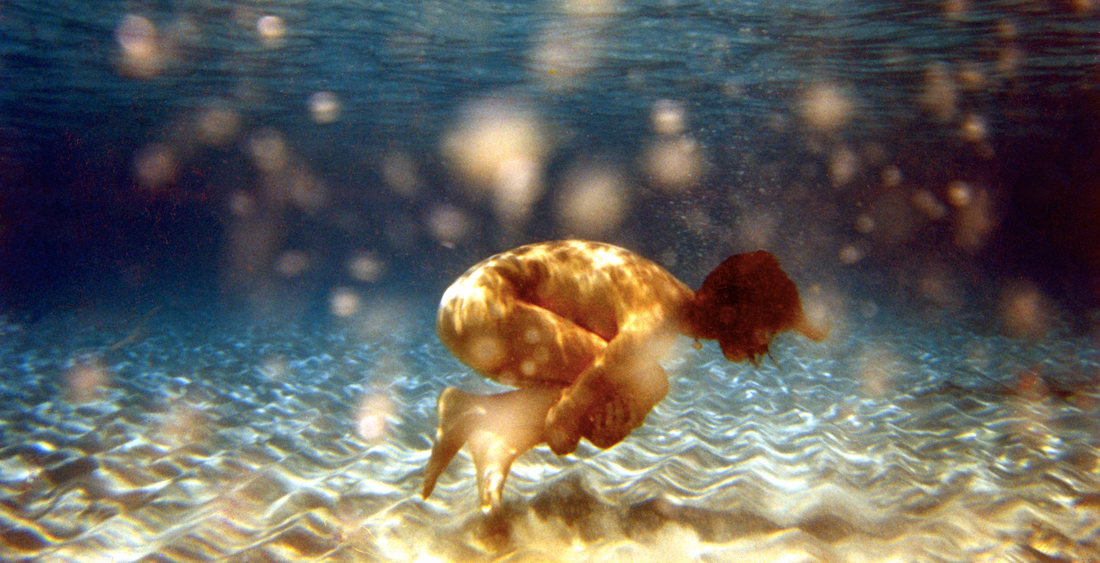
Sustainability Is A Journey--PART I: Is Sustainable Swimwear Really Sustainable?
Before I became an underwear intellectual, I used to work in the environment and human rights nonprofit sectors in Washington D.C. When I moved to NYC and started working in fashion, the issues of waste and bad labor practices were apparent to me immediately within the larger brands, and it's one of the main reasons I've since chosen to align my work only with brands who produce domestically within NYC, while anchoring my own brand here as well. It has also been interesting to be a participant and an observer in watching the industry come to terms with its own sustainability issues and searching for the best way forward. Below is a part one of a three-part essay exploring some of these issues within the fashion industry.
Why are there are so many so-called sustainable swim brands now?
There has been an explosion in brands labelling their swimwear as sustainable, and the reason is this: The mills that are producing spandex from recycled plastics have found a way to scale it out at a cost per yard that is marketable (though still within the luxury pricepoint). But more importantly they’ve dedicated these qualities to running stock yardage, which means smaller companies don’t have to commit to huge minimums up front, a common barrier that usually prevents them from being on the vanguard of any new fabric technology.
The more important question to ask is, why have these mills chosen to do this? I believe the answer is because they saw a demand for this type of technology from enough emerging brands to warrant investing in it. Not only did they see this demand but how important it was to make it accessible to up-and-coming designers by providing these goods in stock. The smaller brands who have been driving the sustainability market and purchasing this fabric have in turn driven bigger brands to follow suit by default. If the smaller guys can figure out how to do it, the bigger guys are obligated to follow, even if that means re-working their supply chains and product budgets.
Yeah, but is recycled plastic swimwear really sustainable?
The answer is yes, but also no…
There isn’t currently a biodegradable material that has all the performance qualities necessary for a swimsuit. As a result, eco-friendly brands are relying on the next best alternative: recycled plastic, rather than virgin plastic, to make products. Spandex, lycra, nylon, and polyester are all synthetic materials that are made out of plastic commonly used to make bathing suits.
Of course, it’s important to remember that recycled plastic is not a perfect solution. When the customer is done with it, it is likely to end up in the trash, since there are currently few facilities that recycle synthetic materials. Also, even though it is made from recycled plastic, the end result is still a synthetic fabric which means the release of dreaded microfibers into our ecosystem.
I have seen the claim that the only “truly sustainable” swimwear worth buying is made from natural fabrics ONLY, and that all swimsuits made from recycled plastic or water bottles are not genuinely sustainable, as they still release microfibers into the environment being that the end product is still a synthetic fabric. This is all 100% true! Recycled plastic swimwear is not 100% truly sustainable.
However, while the ambition to be 100% sustainable is laudable for these individuals, the reality is that the quest for sustainability is full of trade-offs and there are no easy answers, as is illustrated by the points below:
- If I am buying a swimsuit made from cotton or hemp, it definitely will have at least 3% lycra running through it, a virgin plastic material that is NOT biodegradable. Furthermore, once you introduce plastics into natural fibers they cannot be recycled into cotton or hemp again as they have become a mixed quality fabric.
- If you use your natural fiber swimsuit often in the chlorine or saltwater, you may end up cycling through more than a few of them whereas the recycled nylon versions could last many more lifecycles.
- Cotton production (even organic) is incredibly resource intensive and requires a huge amount of water, which is devastating ecosystems. I suggest recycled plastic isn't too bad comparatively, especially if you use a guppy bag to catch microfibers.
- Recycled plastic fabrics provide a market for recycled plastic, turning recycled plastic into a resource, which gives communities and waste management providers an incentive to ensure it doesn’t end up in the ocean and instead ends being reclaimed and reused. Hopefully the fact that this technology is already in use will incentivize further resources to be allocated to creating future sustainable fabric technologies as well.
- As far as clothing goes, being sustainable isn’t the only checkmark that gets checked. If it’s not functional, it’s not fashion either. Sustainable fashion shouldn’t be inferior to non-sustainable fashion…if it lacks in quality and functionality then it has failed as a product, period. This is especially true in technical garments and especially those for women…we are not far from the days where women had to wear corsets, tiny shoes, etc…having a fully functioning swimsuit that I can swim, surf, and play in without inhibition that it will fall apart or expose me is a basic human right.
- Spandex swimwear isn’t the only source of microfibers. Even if every ocean-goer were to switch tomorrow to wearing 100% hemp bathingsuits, there would still be a massive influx of micro and nanoplastic particles resulting from unfiltered laundry wastewater into our ecosystems. Once again, the problem requires actions much more nuanced than finger pointing, box checking, or brand blaming, and true solutions need to be made at legislative and large division corporate levels to have any real impact, with individual consumer demand driving the need for this change. All parts of this equation are important, as we will later see!
Currently, the best options for the conscious consumer are to look for bathing suits made from recycled materials, like fishing nets or plastic water bottles. Then, look at where the textile is printed, and where the bathing suit is sewn--it should be made ethically in a country with strong manufacturing protections. And if you want to rock that crocheted cotton bikini go for it! Just make sure you don't get wet...
..Stay tuned for Parts II & III, where we unpack greenwashing, and look at who most should bear the responsibility of creating a more sustainable future....
(Photo by Patricia Iranzo http://patriciairanzo.com)

